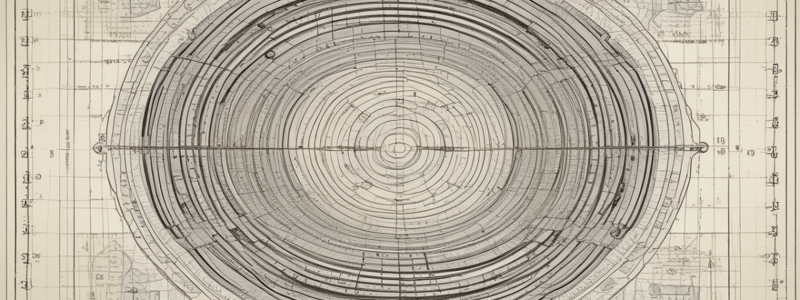Podcast
Questions and Answers
When performing a combined operation, what determines the number of significant figures in the answer?
When performing a combined operation, what determines the number of significant figures in the answer?
- The last operation performed in the combined operation
- The first operation performed in the combined operation
- The operation with the most number of significant figures
- The operation with the fewest number of significant figures (correct)
What is the purpose of using scientific notation to write very large or small numbers?
What is the purpose of using scientific notation to write very large or small numbers?
- To make the numbers easier to read
- To make the numbers easier to perform operations with
- To make the numbers more understandable when they are very large or small (correct)
- To make the numbers more precise
What part of the number determines the number of significant digits when using the formula Nx10X?
What part of the number determines the number of significant digits when using the formula Nx10X?
- The product of N and 10X
- The sum of N and X
- The number N (correct)
- The exponent X
When adding 1.71 + 3.11 + 6.31 and then dividing by 1.2, what is the number of significant figures in the answer?
When adding 1.71 + 3.11 + 6.31 and then dividing by 1.2, what is the number of significant figures in the answer?
Why is the answer to 11.1 divided by 1.2, approximately 9.3?
Why is the answer to 11.1 divided by 1.2, approximately 9.3?
What is the number of significant figures in the number 1.20x10^-3?
What is the number of significant figures in the number 1.20x10^-3?
What is the rule for determining the number of significant figures in a number in scientific notation?
What is the rule for determining the number of significant figures in a number in scientific notation?
When using scientific notation, what is not significant in the formula Nx10X?
When using scientific notation, what is not significant in the formula Nx10X?
What is the purpose of using significant figures in combined operations?
What is the purpose of using significant figures in combined operations?
What happens to the number of significant figures when performing a combined operation?
What happens to the number of significant figures when performing a combined operation?
Study Notes
What are Significant Digits?
- Significant digits describe the number of digits used to express a calculated or measured quantity.
- Significant digits begin with the first digit to the left and end with the last nonzero digit to the right, typically after a decimal place.
Defining Significant Digits
- Accuracy refers to how close a measured value is to the true or accepted value.
- Precision refers to how close the measurements are to each other.
Understanding the Rules of Significant Digits
- Rule One: All non-zero digits are significant.
- Rule Two: Zeros that appear between non-zero digits are always significant.
- Rule Three: Zeros before a decimal point that precede non-zero digits are not significant.
- Rule Four: Zeros to the right of a decimal after a non-zero number are significant.
- Rule Five: Trailing zeros in a whole number are significant only when there is a decimal.
Rules for Operations
- When adding or subtracting values, the number of significant digits cannot exceed the value with the least number of decimal places.
- When multiplying or dividing numbers, the values you start with must first be significant for all digits, and the result has the same number of significant digits as the values you started with.
Rounding with Significant Digits
- When rounding numbers, we first need to know how many digits are significant.
- Typical rounding rules apply to significant figures (if the number is a 5 or below, the number stays the same, but if the number to the right of the digit is greater than 5, we round up).
Examples of Using Significant Digits
- Subtracting 5.554 and 2.2: the result has only two significant digits, which is 3.3.
- Dividing 18.2 and 1.11: the result has only three significant digits, which is 11.9.
- Rounding the number 1.300061 to 6 significant digits: the result is 1.30006.
Significant Digits in Combined Operations and Exponents
- Combined operations involve more than one operation.
- Exponents are used to write very large or small numbers, and the number of significant figures in N is determined by following the rules.
- Examples of using exponents: 1.2x10^3, 1.20x10^-3, 0.02x10^2, and 00.200x10^-5.
Studying That Suits You
Use AI to generate personalized quizzes and flashcards to suit your learning preferences.
Description
Learn about the concept of significant digits, how to count them, and their importance in scientific measurements and calculations.



